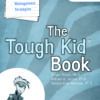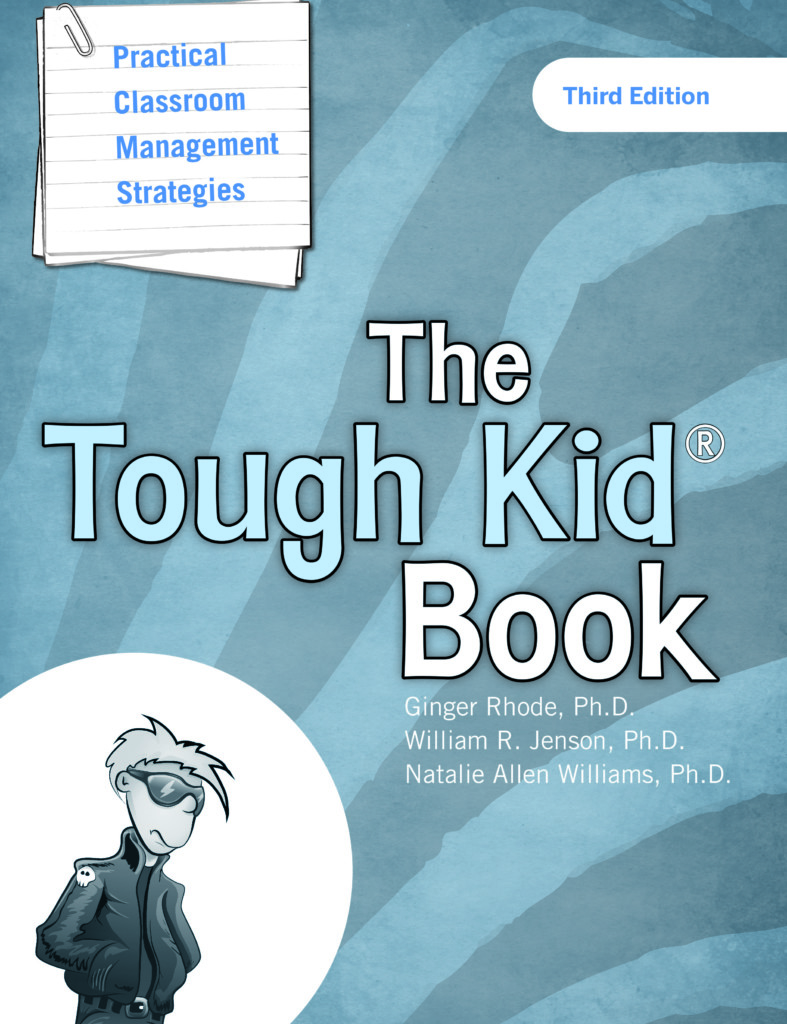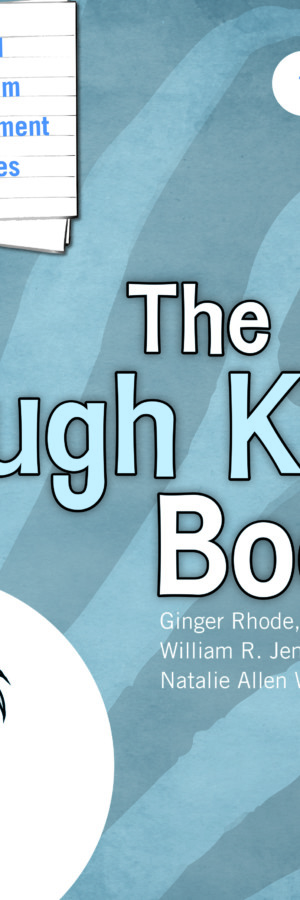Help Tough Kids succeed in school and in life!
Tough Kids combine behavioral excesses such as noncompliance, aggression, and tantrums with less obvious deficits in academic, self-management, and social skills.
Tough Kids are a challenge, but you can use proactive, positive techniques to manage and motivate them. The access code for downloading reproducibles is located within the book.
The Tough Kid Book is for regular and special education teachers, counselors, instructional coaches, and any educator who wants effective and positively focused classrooms.
The third edition guides you through the process of identifying and assessing Tough Kids. It provides suggestions for structuring your classroom to ensure success for all kids—including the most difficult. Step-by-step instructions explain how to implement both positive and corrective strategies for classrooms, groups, and individual students. Advanced behavior strategies such as Tootling, Contracts, Self-Monitoring, and more are designed specifically for Tough Kids. For Tough Kids currently in special placements, the Tough Kid Generalization Model offers a detailed plan for returning them successfully to the general education classroom.
All techniques presented in The Tough Kid Book have been shown to be effective by rigorous research.
New and updated in the third edition:
- Advanced strategies such as Tootling and Clean Your Plate to teach and encourage Tough Kids to demonstrate positive behaviors such as praising classmates and completing their independent work
- Techniques to improve academic engagement and performance
- Tips for using a functional behavior assessment to uncover the function of a misbehavior
- Executive functioning skills and the Tough Kid
- How to select and teach classroom rules
The companion book, The Tough Kid Tool Box, provides ready-to-use reproducibles and detailed directions for implementing many of the behavior management strategies presented in The Tough Kid Book.
Table of Contents
Introduction: What This Book Will Do For You 1
Who This Book Is For 3
The PBIS and MTSS Picture 3
In This Book 5
References 8
Chapter 1: Getting Started With Tough Kids 9
Tough Kid Defined 10
Behavioral Excesses 10
Behavioral Deficits 12
Social Skills Deficits 14
Academic Skills Deficits 15
Summary: Tough Kid Defined 16
Practical Assessment of Tough Kids 16
Behavior Checklists 20
Behavior Observations 23
Teacher Compliance Probes 26
Functional Behavior Assessment: The Purpose and
Why of Behavior 28
Assessing Discipline Problems in Whole Schools 35
Academic Assessment 36
Linking Assessment to Target Behavior Intervention 39
Proactive and Preventive Intervention Strategies 41
Classroom Rules: Don’t Leave Home Without Them 41
Your Classroom Schedule—Downtime Causes Problems 47
Structuring Your Classroom Space 48
Get Up and Move 50
Influence Techniques for Tough Kids 50
In a Nutshell (Summary) and References 57
Chapter 2: Unique Positive Procedures 61
Foundations of Positive Teaching 62
Positive Strategies 63
Myths About Positive Reinforcement 66
Other Objections 69
Why Motivation Is Like Heavy Metal Poisoning 69
Antecedent Strategies 71
Motivation and Encouragement 71
Effective Use of Positive Reinforcement 73
Natural and Novel Positive Reinforcement 74
Edible Reinforcement 76
Material Reinforcement 79
Social Reinforcement 81
Activity Reinforcement 82
Assessing and Selecting Reinforcement 83
Reinforcer Preference Assessment 86
“But Doctor, Nothing Reinforces My Student!” 87
Variables That Make Reinforcement Effective 88
How to Use IFEED-AV 88
Other Factors That Increase Reinforcer Effectiveness 90
Fading 91
Unique Delivery Systems for Positive Reinforcement 93
Wandering Social Reinforcer 93
Chart Moves 93
Magic Pens 95
Spinners 96
Mystery Motivators 98
Grab Bags 100
Punch Cards 100
Lottery/Raffle Tickets 101
Yes/No Program 104
Dots for Motivation 104
Classroom Auctions 107
In a Nutshell (Summary) and References 109
Chapter 3: Practical Reductive Techniques
for the Classroom 111
What Are Reductive Techniques? 113
Effective Use of Reductive Techniques 114
Oh No! Not From Someone I Like 114
Replacement Behaviors: You Can’t Misbehave and Do
That Too—It’s Impossible! 116
Swimming Pool Effect—Don’t Let Them Get Used to the Water 116
Use It Early—Don’t Wait for the Explosion 117
Peer Attention and Behavioral Contagion:
Are Misbehaviors “Catchy?” 117
Reductive Techniques 119
Request and Reprimand Antecedents—First Line of Defense 119
Precision Requests 125
Designing a Hierarchy of Consequences 127
Mystery Consequence Box and Chronic Rule Breakers 134
Group Contingencies: Peer Influence—How to
Use It Advantageously 135
Potent Reductive Consequences 143
Response Cost Lottery 143
Timeout 145
Check-In/Check-Out Program 156
Positive Reductive Techniques 157
Differential Attention 157
Behavioral Momentum 160
The “Sure I Will” Program 162
In a Nutshell (Summary) and References 166
Chapter 4: Advanced Systems for Tough Kids 171
Academic Instruction 172
Academic Learning Time 174
Explicit/Direct Instruction 174
Teaching Executive Functioning Skills 177
Strategy Instruction 180
Active Student Responding 182
Cover, Copy, and Compare 186
Monitoring and Evaluation of Academic Progress 189
Social Skills Training 190
Advanced Behavior Strategies 194
Tootling, or Put-Ups 194
Clean Your Plate: Choice-Making 201
The Teacher’s 100 Club 204
Contracts 209
Home Notes 216
Audible Signaling Programs 224
Self-Monitoring 229
Peer Tutoring 234
Parent Training 236
In a Nutshell (Summary) and References 240
Chapter 5: Getting Tough Kids Back to
General Education Settings 245
Mainstreaming and Inclusion as a Generalization Process 248
Ten Things Administrators Should Consider When Tough Kids
Return to Their Schools 250
When Is a Tough Kid Ready to Return? 251
Components of the Tough Kid Generalization Model 253
Component 1: Use a Special Placement Level System 254
Component 2: Conduct a Common Classroom
Stimuli Assessment 265
Component 3: Identify and Teach Individual Teacher’s
Expectations (Individualizing) 266
Component 4: Teach the Top 5 to Survive—The Teacher Pleaser
Social Skills Program 272
Component 5: Make the New Environment More Familiar
With Lucky Charms 274
Component 6: Cultivate Self-Management Skills 275
Putting It All Together: The Tough Kid Generalization Model 276
Steps in The Tough Kid Generalization Model 277
The Placement Crisis 284
In a Nutshell (Summary) and References 288
Appendix A: Research and Evidence-Based Practice—
The Tough Kid Commitment 291
Appendix B: Individual Skill Cards 295
Appendix C: The Tough Kid Teacher Pleaser Social Skills Program 305
“Over the years, The Tough Kid Book and its companion, The Tough Kid Tool Box, have defined the gold standard for effective intervention with students who experience behavioral-emotional challenges in their schooling. The authors of these superb, teacher-friendly products are broadly known for their ground-level understanding of the challenges teaches face in managing the behavior of tough kids.
These authors’ collective experience and perspectives have enabled them to produce products that provide the answers teachers and related school staff are searching for. These are rarefied skills indeed and are clearly reflected throughout the design and presentation of the material in these two products.
The Tough Kid Book incorporates the most up-to-date discoveries and best-practice strategies available and presents them in a highly usable format. I recommend this book without reservation and believe it should be an integral part of every teacher’s ‘toolbox’.”
—Hill M. Walker, Professor of Special Education and codirector of the Institute on Violence and Destructive Behavior, University of Oregon, and Senior Research Scientist at the Oregon Research Institute
“We have used The Tough Kid Book and The Tough Kid Tool Box for decades in our school-based research. They are simply unparalleled in the field. The Tough Kid materials provide a one-stop resource for behavior consultants, coaches, interventionists, and teachers. They are easy to use and comprehensive in their approach. Most importantly, the strategies work! We consistently turn to the Tough Kid materials when consulting with teachers and parents who are searching for solutions for dealing with tough kids in their classrooms and homes. We can’t wait to use the new strategies! They are excellent additions to the tried-and-true methods and a welcome addition to an already exceptional resource. Hands down, The Tough Kid Book and The Tough Kid Tool Box are the most important materials in schools today. Every educator should have these!”
— Susan M. Sheridan, Director, Nebraska Center for Research on Children, Youth, Families, and Schools; George Holmes University Professor, University of Nebraska–Lincoln
What distinguishes The Tough Kid Book from other resources for evidence-based strategies that get students to follow classroom rules and comply with teacher requests? Rhode, Jenson,,and Williams have distilled decades of research and experience with hundreds of teachers into tactics that not only prevent and manage problem behavior, they build students’ repertoires. A treasure-trove of reliable methods for teaching disruptive and disagreeable students to assume responsibility for their own behavior, desire and achieve academic success, and look out for the welfare of others. The Tough Kid Book can help teachers transform out-of-control classrooms into safe, productive, and fun learning environments.
—William L. Heward, Ed.D., BCBA-D, Professor Emeritus, College of Education and
Human Ecology, The Ohio State University




